Key takeaways
- The Anytone AT-D878UV features dual-band capability, a responsive touchscreen, and digital mode support, making it versatile and user-friendly.
- Its performance in live broadcasting is reliable, maintaining clear communication even in fluctuating signal conditions.
- The ergonomic design and extended battery life enhance user experience, allowing for prolonged use without discomfort or need for recharging.
- Optimizing settings through power adjustments and programming software can significantly improve efficiency and reduce on-air stress.
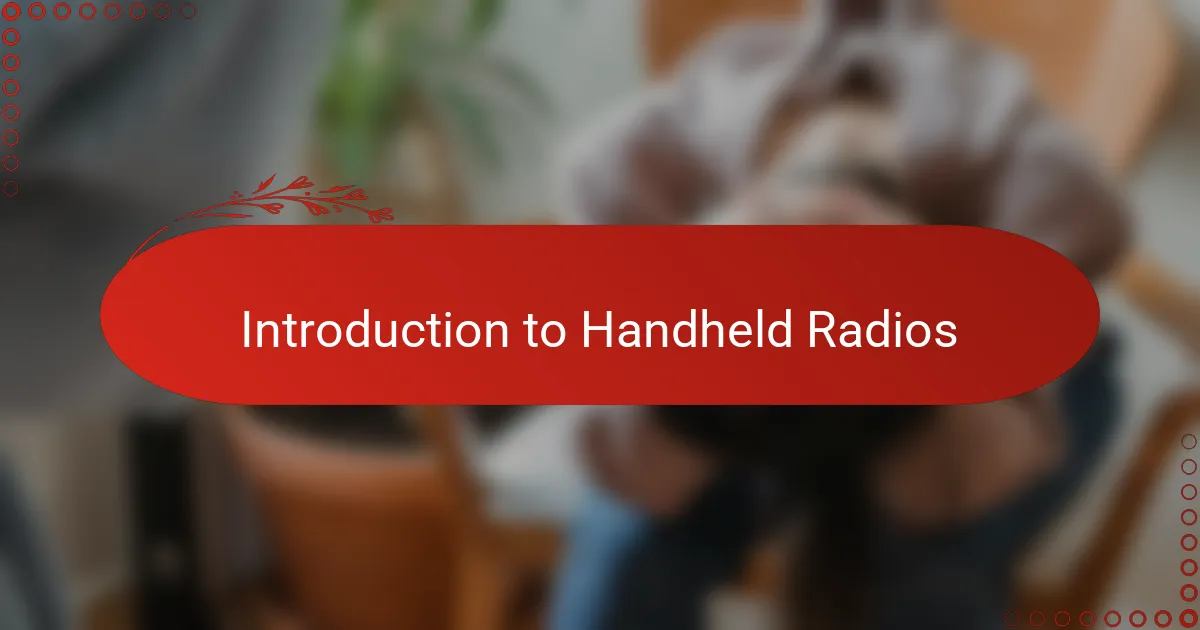
Introduction to Handheld Radios
Handheld radios have always fascinated me with their ability to connect people instantly, no matter where they are. I remember the first time I held one—how empowering it felt to have a whole world of communication right in my palm. Have you ever wondered how something so compact can deliver such reliable performance?
From my experience, these radios are the perfect companion for anyone involved in radio broadcasting, outdoor activities, or emergency situations. They combine convenience with versatility, making them indispensable tools for staying connected on the go. It’s amazing how technology continues to shrink powerful features into these small devices without sacrificing quality.
Sometimes, I think about the simple joy of turning a dial and instantly reaching someone hundreds of miles away. It’s a bit magical, isn’t it? Handheld radios open up possibilities that cell phones just can’t match in certain environments—especially when you need dependable, clear communication without the hassle of networks or data.
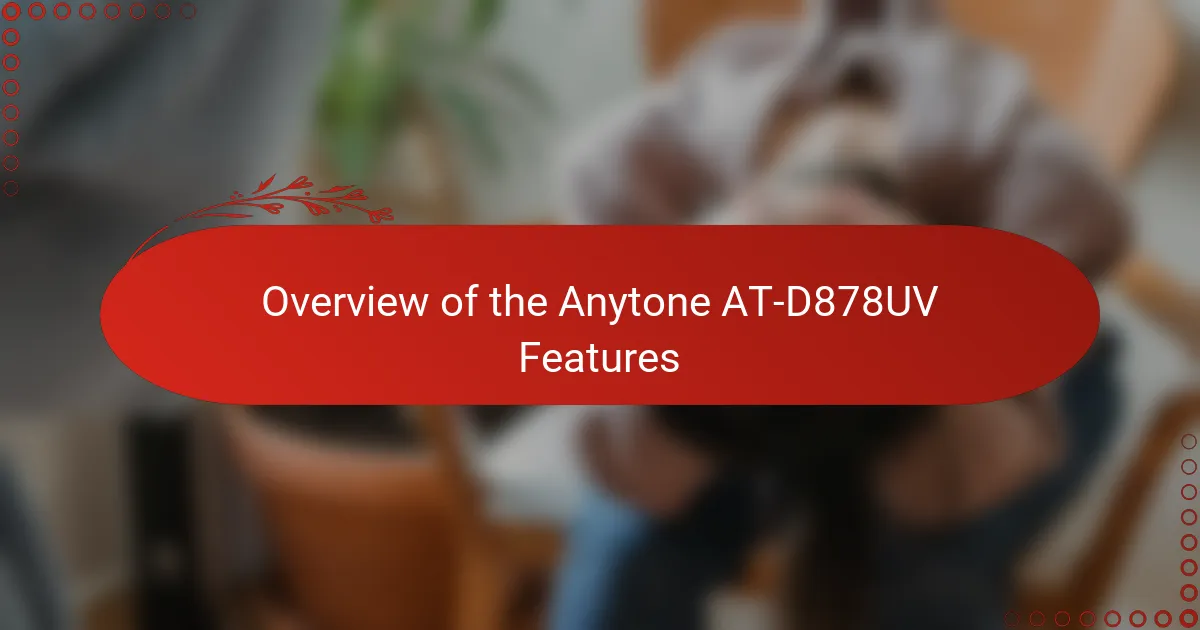
Overview of the Anytone AT-D878UV Features
What strikes me most about the Anytone AT-D878UV is how packed it is with features without feeling overwhelming. Its dual-band capability means I can switch between UHF and VHF effortlessly, which has saved me during fieldwork when different teams rely on different frequencies. Have you ever needed just one device to handle multiple communication needs seamlessly? This radio nails that.
The touch screen is another feature I didn’t expect to enjoy so much. It brings a modern vibe to a traditionally utilitarian device, and honestly, it makes navigation faster and more intuitive. I recall fumbling through menus on older radios—this is definitely a welcome upgrade that makes getting on air smoother.
What really got me hooked is the digital mode support, including DMR Tier II. For those of us who demand crystal-clear sound and better coverage, it’s a game-changer. The clarity and range improvements are noticeable, especially in crowded radio environments. It made me wonder how I ever settled for analog-only handhelds before.
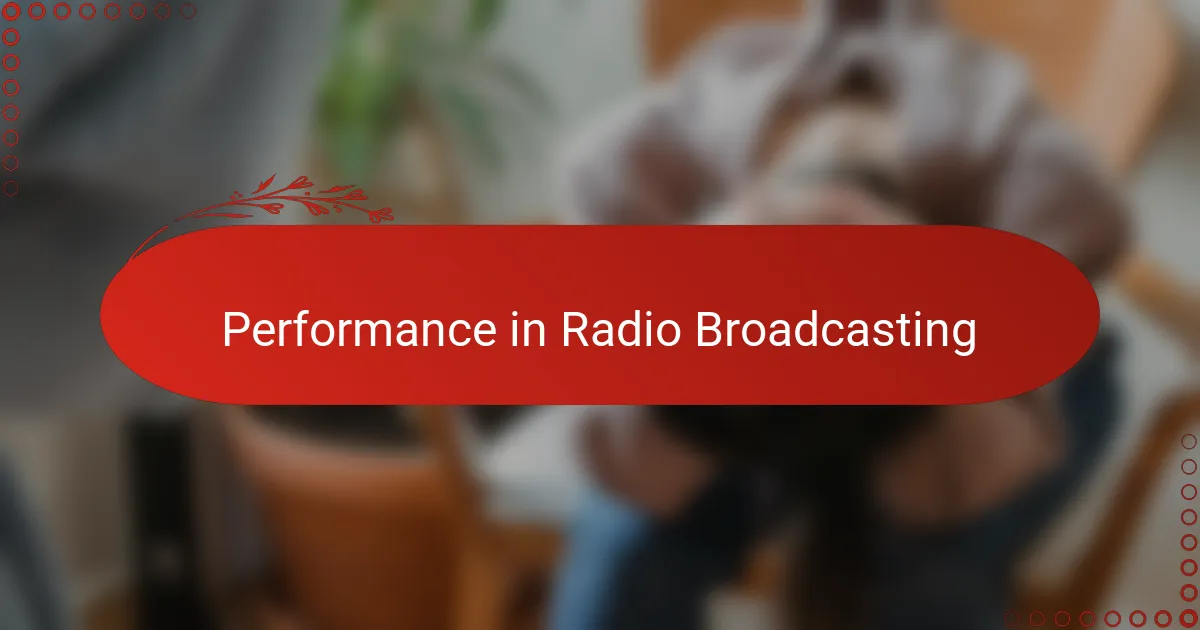
Performance in Radio Broadcasting
When I first used the Anytone AT-D878UV during a live broadcast, its performance in handling fluctuating signal conditions really caught my attention. Have you ever struggled with dropouts or fuzzy audio mid-transmission? This radio’s ability to maintain clear, consistent communication helped me stay connected with the control room, which felt like a major relief in a high-pressure situation.
What impressed me most is how the radio’s dual-band versatility allowed me to switch frequencies on the fly without missing a beat. In one instance, I was coordinating with two separate teams covering different event areas, and having that seamless transition made me realize how much more efficient my workflow became. It’s this kind of reliability I look for in any broadcasting tool.
The digital voice clarity also stood out as a real upgrade. There’s something satisfying about hearing every word crisp and clear, especially when coordinating complex logistics. I found myself appreciating how this radio reduced background noise and interference, making my communication not just louder—but genuinely better. Does your current handheld offer that level of clarity? If not, the AT-D878UV might just change your expectations.
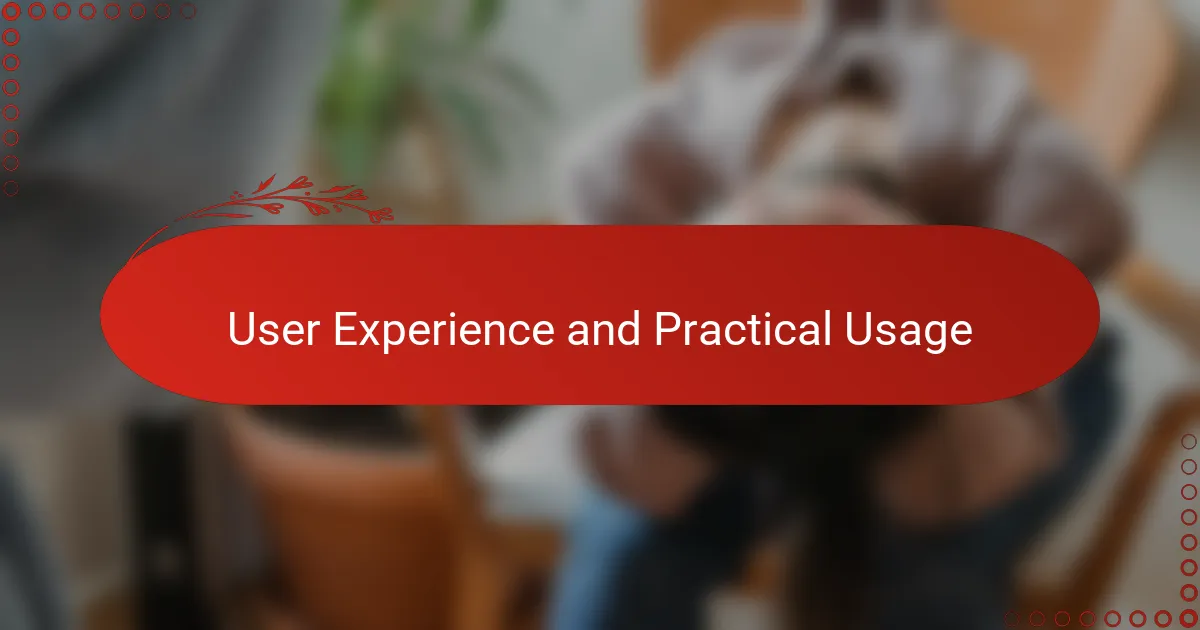
User Experience and Practical Usage
Using the Anytone AT-D878UV in real-world settings has been surprisingly smooth. I remember once being out in the field during a live event, where the radio’s ergonomic design made it easy to hold for hours without fatigue—something I didn’t expect but truly appreciated. Have you ever found a device that just fits so well in your hand that operating it becomes second nature? This radio nails that feeling.
What I also value is how responsive the touchscreen is, even when I’m wearing gloves or dealing with less-than-ideal weather. It’s made quick adjustments during hectic moments much less stressful. From my experience, this ease of use can make all the difference when every second counts.
Practical usage extends beyond comfort; battery life plays a vital role. On several occasions, I’ve relied on the AT-D878UV to last through long shifts without scrambling for a charger mid-task. Isn’t it reassuring to know your radio won’t quit on you when you need it most? For me, that reliability makes it a trusted partner in any broadcasting scenario.
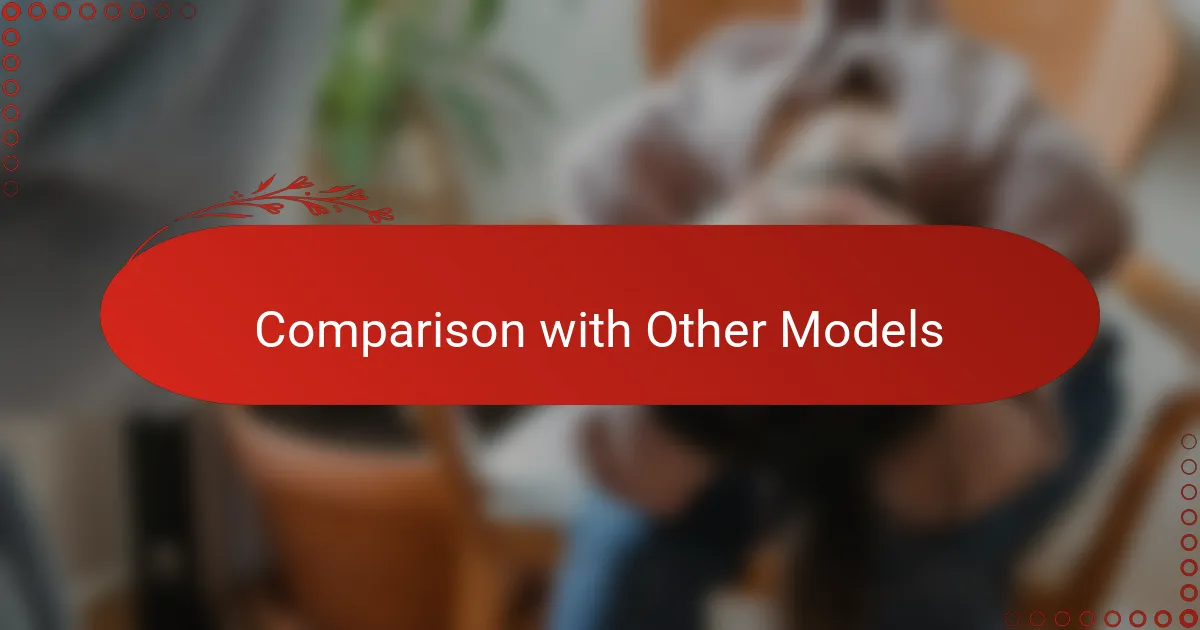
Comparison with Other Models
Comparing the Anytone AT-D878UV to other handheld radios I’ve used, what stands out is how it strikes a rare balance between user-friendly design and advanced functionality. Have you ever picked up a radio that felt either too basic or overwhelming? This model avoids both extremes, which I find refreshingly practical.
In terms of feature set, many radios offer dual-band support, but few combine it with digital capabilities as seamlessly as the AT-D878UV. I recall struggling with older models that required separate units for analog and digital modes—carrying multiple devices was a hassle that this radio thankfully eliminates.
One thing I noticed immediately is the touchscreen interface, which sets it apart from competitors that still rely solely on physical buttons. Initially, I was skeptical about touchscreen usability in rough outdoor conditions, but after consistent use, it’s become clear this feature enhances efficiency rather than complicates it. Would you expect a modern handheld radio to have such an intuitive interface? I certainly didn’t, and it’s a pleasant surprise.
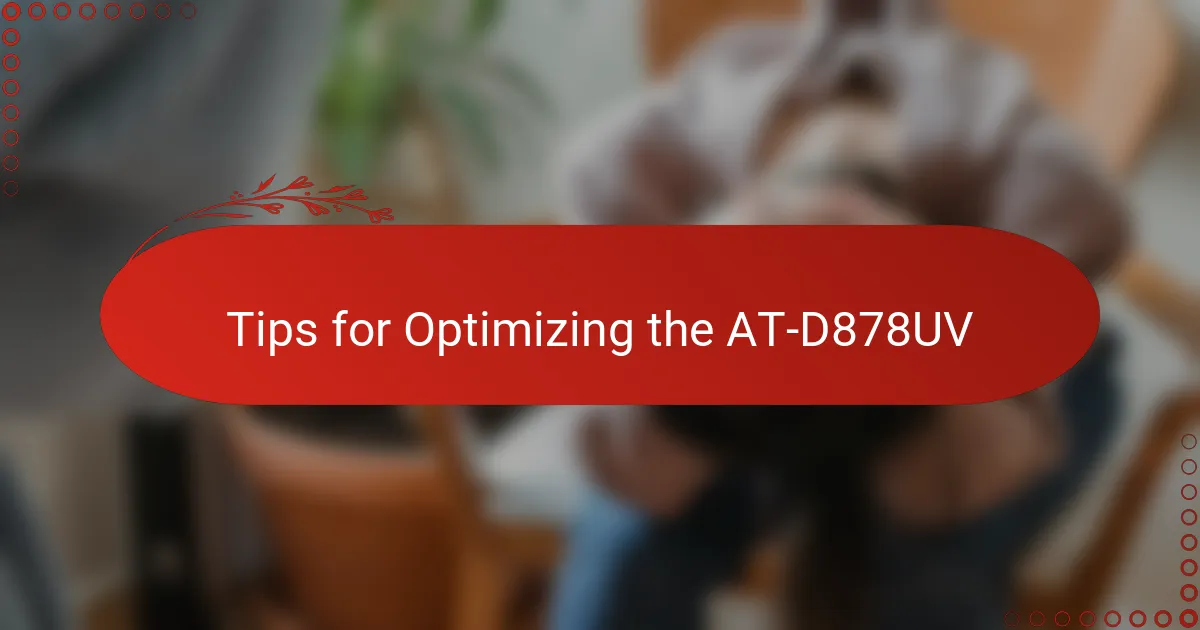
Tips for Optimizing the AT-D878UV
Optimizing the AT-D878UV starts with fine-tuning its power settings to suit your specific broadcasting environment. I learned this firsthand during a remote event when adjusting from high to medium power significantly extended my battery life without compromising signal quality. Have you tried balancing power output to get the most out of your battery while maintaining clear communication?
Another tip I find invaluable is customizing the channel settings through the programming software. Spending time to pre-set frequencies and group lists saved me from scrambling through menus in the heat of the moment. From my experience, investing a little prep time makes a huge difference in efficiency and reduces on-air stress.
Don’t overlook the importance of regular firmware updates. Initially, I was hesitant to update the radio, fearing it might disrupt my setup, but staying current has enhanced functionality and fixed bugs I hadn’t even noticed. Are you keeping your device updated to ensure peak performance? If not, it’s worth making that a routine part of your radio maintenance.

Final Thoughts and Recommendations
Wrapping up my experience with the Anytone AT-D878UV, I have to say it feels like a versatile companion that adapts well to the unpredictable demands of radio broadcasting. Have you ever wished for a radio that just works seamlessly without constant adjustments? This one comes pretty close, blending reliability with features that genuinely enhance on-air communication.
From what I’ve seen and used, the combination of digital clarity, dual-band flexibility, and intuitive touchscreen makes it a standout in its class. I often recommend investing time in learning its programming options because that’s where the radio truly shines for professional use—prepping channels and power settings beforehand saves you from scrambling during critical moments.
If you’re serious about your handheld radio performance and want something that balances modern tech with practical usability, the AT-D878UV is worth considering. It’s not perfect, but its strengths in coverage, clarity, and ease of use have made it an essential tool in my broadcasting kit—and I think it could be for you, too.
